How to grow your sales with email communication customized for customer lifecycle

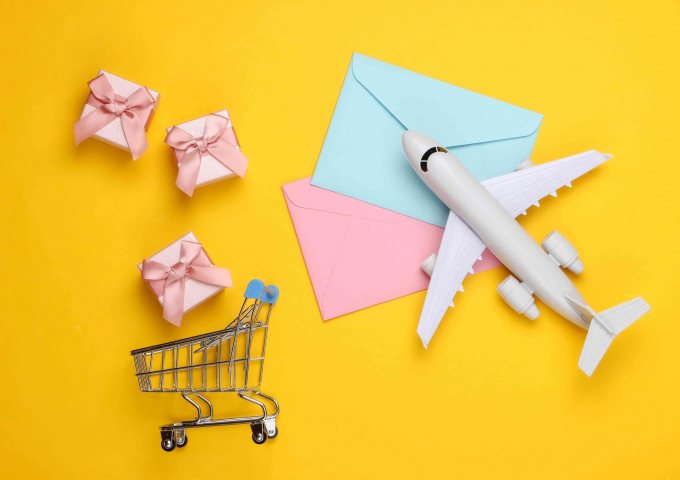
Customer buying behavior is different before, during, and after the purchase. Each of these stages requires different email communication. With this article, you will understand how to best set it up to boost purchases in your MyOnlineStore.
What is the customer lifecycle?
The customer lifecycle describes the stages a customer goes through in the buying process - from when they first hear about you to when they become your loyal customer. To reach new and maintain relationships with existing customers, you need to understand each stage and set a different strategy for each.
The stages of the customer lifecycle are:
- Prospective customer
- Undecided customer
- Repeat purchases
- Strengthening the relationship
- Lost customer
Prospective customers
A site visitor has yet to decide to buy from you. Use the cheapest way to attract a potential customer. Simply ask for their email right away and increase the chances of making the first purchase.
How would you do it?
- Create a signup form
- Welcome the potential customer
Create a signup form
In the form, offer value to the contacts in exchange for their email address, so they have a high incentive to fill it out. Consider free shipping, a discount on their first purchase, or an e-book with valuable information.
There are 3 types of forms you can use to reach potential customers.
Pop-up form
Offer your customer a discount in exchange for an email and motivate them to make their first purchase. The pop-up will only appear when the user first visits the page and usually pops up when they try to leave the page or after a few seconds on the page.
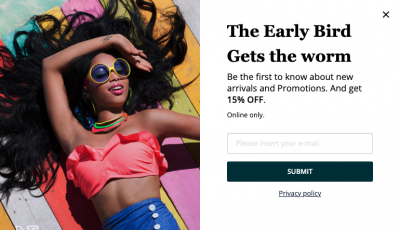
Slider form
The slider is a less aggressive form type and is ideal for offering downloadable content or a discount. It only rolls out after a potential customer clicks a button at the bottom of the site.
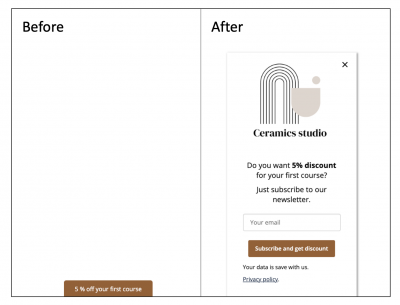
Static form
You don't have to offer discounts to everyone. Add a static form to your website to sign up for your newsletters. They are typically located in the footer.
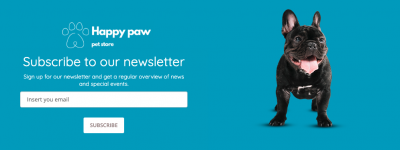
Welcome the potential customer - welcome campaign
Get potential customers to make their first purchase as quickly as possible, or introduce your company to newcomers and guide them to further communication with you.
The best way to react immediately after the sign-up is to send a welcome email. A welcome email is usually expected by the potential customer and therefore can have an open rate of over 80%. And if you include a clear CTA, up to a third of recipients will click on it. Welcome the new contact, and remember to deliver on what you promised in the collection form - send a discount coupon or interesting content.
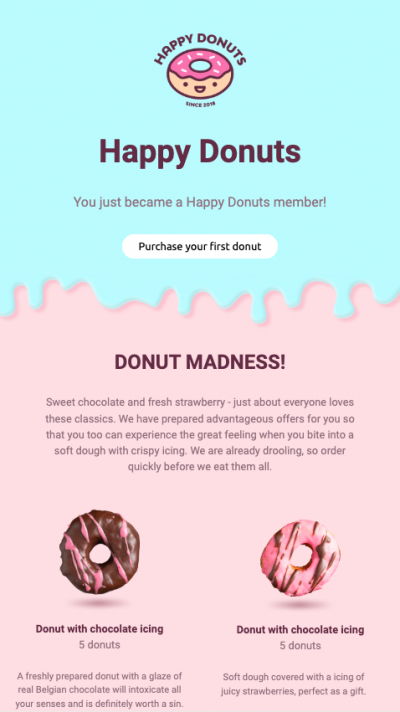
Indecisive customer
Getting the lead is the first step to getting a new customer. But the task of ensuring they make their first purchase might be even more important. Until now, you have only asked for their email. Now, the focus shifts towards earning their trust and commitment through their first transaction.
How would you do it?
- Welcome email with discount coupon
Welcome email with discount coupon
To transform a contact who hasn't made a purchase into a loyal customer, a well-crafted welcome email with a special discount on their first purchase can be incredibly effective.
The key lies in personalization and value proposition.
First, do not forget to express gratitude and welcome them to your community in the first email. If you have their name, use it to emphasize the exclusive nature of the discount they've received.
The second important part of the email is the value proposed and the call to action. To simplify the purchase process, make shopping a seamless experience.
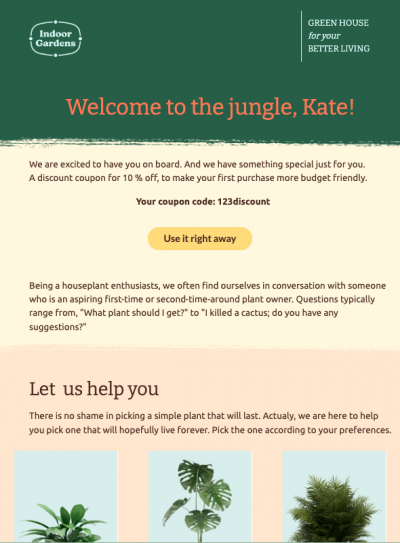
Repeated purchases
Retention is cheaper than acquisition, which is why loyal customers are the most essential group you have. The following campaigns will ensure you get regular purchases.
How would you do it?
- Discount for your next purchase
- Product recommendations
- Repeated consumption
- Anniversary of the first purchase
Discount for your next purchase
As a thank you, send an email with a discount code for your next purchase with a limited-time offer that will create a sense of urgency and interest to make another purchase at your store.
Product recommendations
Respond to customers' buying behavior and recommend products based on their purchases. Automatically send emails with products that are a perfect match for the purchased item (cross-sell) or recommend a larger package or upgraded version of the product (up-sell).
Repeated consumption
If you sell goods that customers have to buy repeatedly (such as contact lenses or pet food), take advantage of this. Remind them in advance that their stock is running low and allow them to repeat their last order straight away in the email.
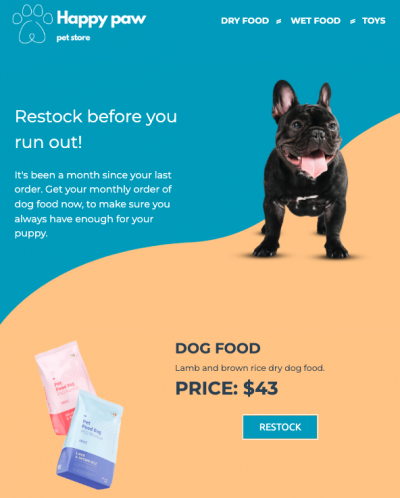
Anniversary of the first purchase
Celebrate the anniversary with your customer with a small gift to motivate them to make another purchase. Send them an email telling them you still have something to offer and that they haven’t purchased in a while.
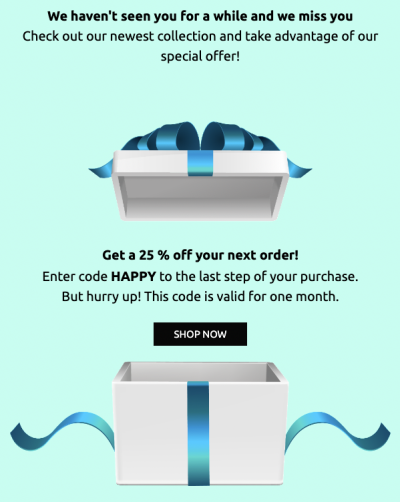
Strengthening the relationship
Customer care should be as important to you as retention. Send them content that makes them happy or is full of information, and they won't stop buying from you. These campaigns are good for strengthening the relationship.
How would you do it?
- Purchase rating
- Content email
- Holiday Campaign
- Loyalty Club
Purchase rating
Get valuable reviews that convince other customers of your quality. To motivate the customer to complete the review, you can promise them something extra for completing it - a discount, free shipping on their next purchase, or points for a loyalty program.
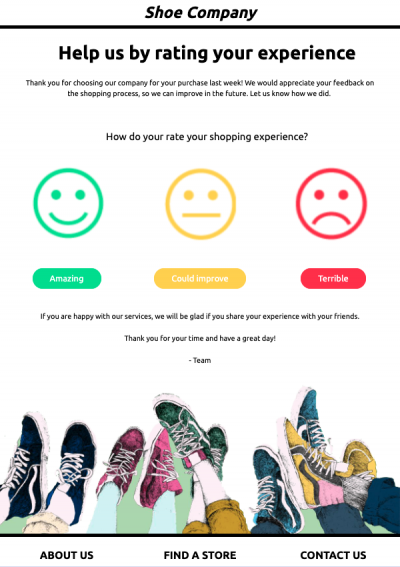
Content email
Ensure you are a strong industry expert by providing advice and tips. After purchase, send the customer a newsletter full of useful information about the product they purchased. In the email, describe its benefits or send helpful tips on how to use it
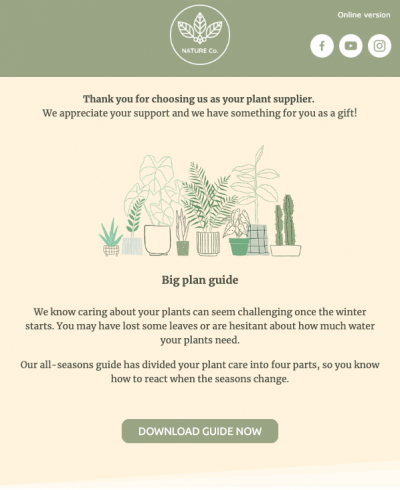
Holiday Campaign
A holiday or birthday campaign builds a stronger relationship and is also great at motivating customers to buy. You can give the customer a discount code or even free shipping as a birthday or holiday gift.
#extra tip: Be careful about offering discounts too often. For example, if you have an extra sale on Black Friday, and Christmas, use New Year’s Eve only as a way to wish customers a joyful time.
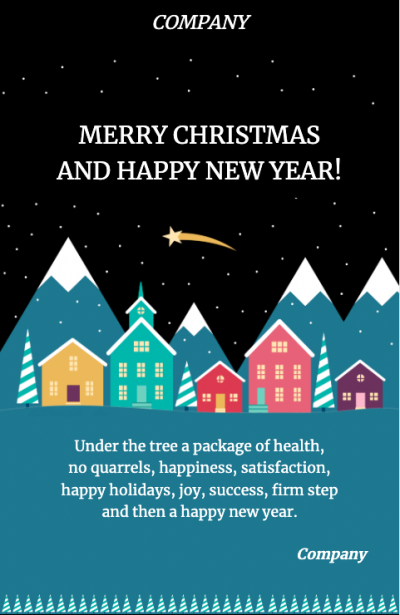
Loyalty Club - exclusive discounts and promotions for members
Your loyal customers should feel that they get a lot of benefits from you. This will give them no reason to switch to your competitors. So include the option to collect loyalty points in your email campaigns, introduce special offers, or send exclusive discounts only for club members.
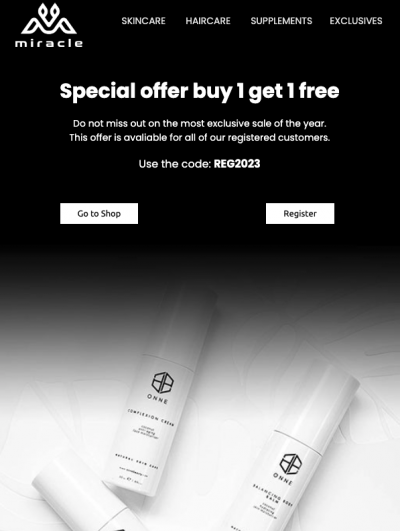
Lost customer
Not every customer will remain loyal to your brand in the long term. It may happen that they will not place another order and will be inactive in your store for a long time because they bought from competitors.
But don't give up yet! Try to re-engage them and remind them you exist. These campaigns will help you do that.
How would you do it?
- Exclusive offers
- Reactivation campaign
Exclusive offers
Communicate with the inactive part of the database only rarely, for example on Black Friday or for special offers. These are events that, with the support of a well-chosen subject line and preheader, can entice the customer to open the newsletter and take advantage of your offer.
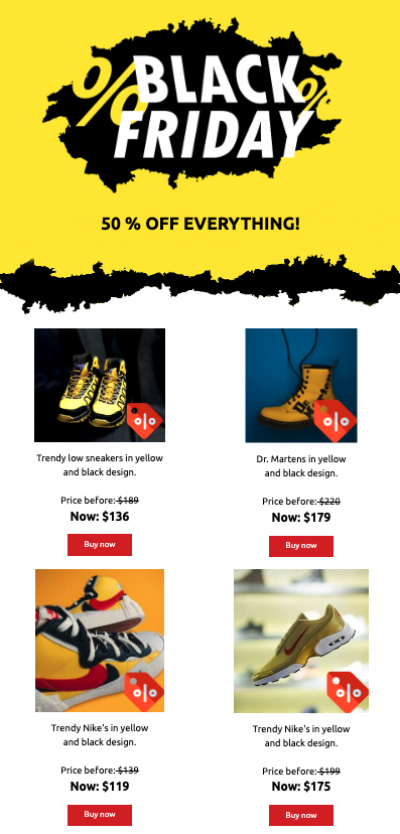
Reactivation campaign
Reach inactive contacts at the appropriate time with automated emails. Just define what inactivity means to you and send an automated email once that happens. Preferably, send something no one can resist. This will help you increase the chances of customers returning to your store again.
#tip: Work with urgency (for example countdown timer) and reactivate the customers faster.
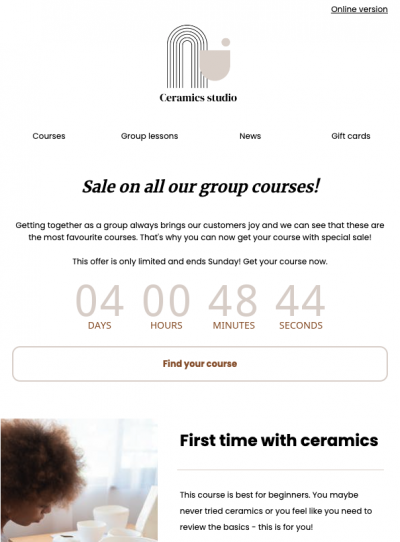
Whatever stage of your customer's lifecycle, you can use these proven email campaigns to communicate effectively with them and achieve a quality base of loyal customers.
About Ecomail
Ecomail is an email marketing company specializing in helping e-commerce businesses grow.
They provide you with a self-service platform, that allows you to send classic email campaigns and also automate some flows (like welcome emails, abandoned carts and after purchase care). With them, you can serve customers in all stages of the customer journey.
Because of a great integration, you have your store data synced to Ecomail automatically. With them, you can personalize your communication and react to each customer individually.
